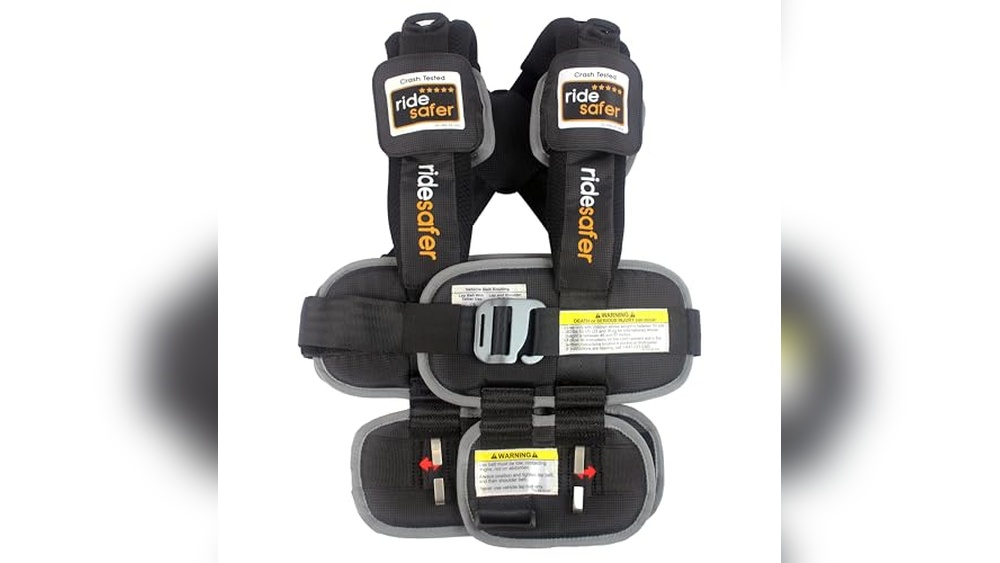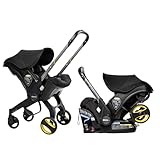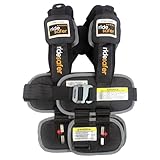When it comes to your child’s safety, few decisions feel as crucial as choosing the right car seat. As your little one grows, transitioning from a rear-facing to a forward-facing car seat is a significant milestone.
But when exactly is the right time to make this switch? This question might keep you up at night, especially with the abundance of information—and misinformation—surrounding car seat safety. We’ll cut through the noise and provide you with clear, evidence-based guidance on when to move your child to a forward-facing car seat.
You’ll discover the expert recommendations that ensure your child’s safety and comfort, allowing you to drive with peace of mind. Stick with us to learn the key signs that indicate it’s time for a change, and empower yourself with the knowledge that could make all the difference in keeping your precious cargo safe.
Choosing The Right Time
Choosing the right time for transitioning to a forward-facing car seat is crucial. Parents often wonder when the switch should happen. Safety should be the top priority. Making the right decision ensures your child’s protection on the road. Consider age, weight, and height when determining readiness. Let’s explore these factors in detail.
Age Guidelines
Most children can switch between ages 2 and 4. Experts suggest keeping a child rear-facing as long as possible. Rear-facing seats offer better protection during a collision. Check specific age guidelines from the car seat manufacturer.
Weight And Height Requirements
Weight and height are vital for car seat safety. Most forward-facing seats have a weight limit of 40 pounds. Height limits often range from 40 to 57 inches. Refer to your car seat manual for precise numbers. Ensure your child meets both requirements before transitioning.
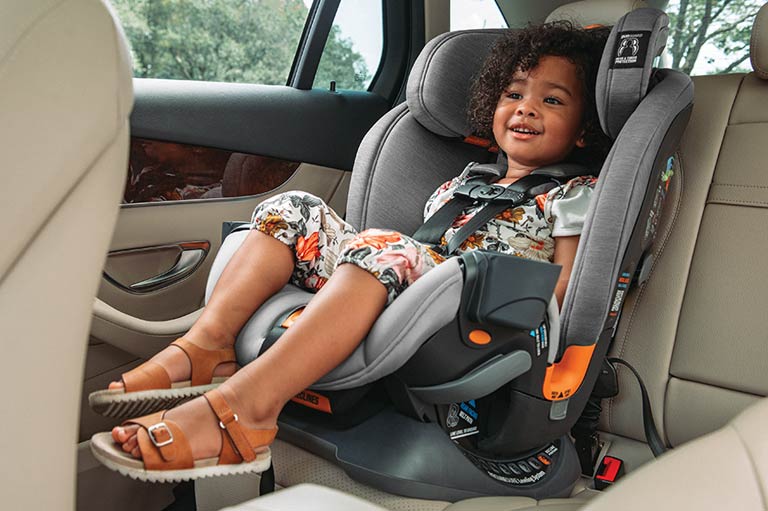
Safety Features To Consider
Ensure the car seat has a sturdy harness system for security. Check for side-impact protection to shield during accidents. Make sure the seat offers adjustable headrests and recline positions for comfort.
When choosing a forward-facing car seat, understanding the safety features available is crucial for keeping your child secure. With a variety of options on the market, knowing what to look for can make a big difference. Prioritizing the right features can ensure peace of mind every time you buckle up.Five-point Harness
The five-point harness is a safety feature you don’t want to overlook. It includes straps that go over both shoulders, both hips, and between the legs. This design helps distribute crash forces across the strongest parts of the body. Imagine the peace of mind knowing your child is securely fastened during every trip. A five-point harness keeps them snug, reducing movement and increasing safety. Next time you adjust those straps, remember you’re adding an extra layer of protection.Side-impact Protection
Side-impact protection is essential for safeguarding your child in the event of a side collision. Many car seats offer reinforced wings or energy-absorbing materials for this purpose. These features cradle your child’s head and body, reducing the risk of injury. Consider the unpredictable nature of traffic and the added safety this feature provides. Knowing your car seat has side-impact protection can help you feel more confident on the road. Isn’t it worth considering that extra safeguard?Easy Installation
Proper installation of a car seat is as important as the seat itself. An easy-to-install car seat can prevent common errors that compromise safety. Look for options with clear instructions and simple mechanisms. Have you ever struggled with complicated car seat installations? An easy-to-install model saves time and ensures your child’s seat is securely fastened every time. Choose a car seat that makes installation a breeze and travel with peace of mind. With these features in mind, you’re better equipped to select a forward-facing car seat that prioritizes safety. Each trip with your child should be as safe as possible, and choosing the right car seat is a step in the right direction.Installation Tips
Installing a forward-facing car seat requires careful attention. Proper installation ensures your child’s safety during travel. Many parents feel overwhelmed by the process. This guide simplifies installation tips for a secure fit. Follow these steps to make sure your car seat is properly installed.
Securing The Seat
Begin by placing the car seat in the vehicle’s rear seat. Check the car’s manual for instructions specific to your model. Use the seatbelt to secure the seat tightly. Make sure the seat does not move more than an inch. A tightly secured seat provides better protection.
Adjust the recline angle following the car seat’s manual. Ensure the seat is in the correct position. This helps in keeping your child comfortable and safe. Double-check the seatbelt path for proper alignment. An incorrectly aligned seatbelt can compromise safety.
Using Tether Straps
Tether straps add an extra layer of security. Locate the tether anchor points in your vehicle. They are usually behind the rear seat. Attach the tether strap to the anchor point. Make sure it is tightened without slack. This prevents the seat from tipping forward during sudden stops.
Ensure the tether strap is routed correctly. Follow the car seat’s manual for guidance. A properly routed tether strap enhances stability. Regularly check the tension of the strap. Adjust as needed for continued security. This helps maintain the seat’s proper position.
Transitioning From Rear-facing
Transitioning from a rear-facing car seat to a forward-facing one is a significant step for your child’s safety. Ensure your child meets the height and weight requirements before making the switch. Always install the car seat according to the manufacturer’s instructions for optimal protection.
Transitioning your child from a rear-facing car seat to a forward-facing one is a significant milestone. It’s not just about turning the seat around, but ensuring your child is ready for this change. Safety is paramount, and knowing the right time to make the switch can be challenging. Let’s explore how to confidently make this transition.Signs Your Child Is Ready
Determining if your child is ready for a forward-facing car seat involves more than checking their weight or height. Look for signs of maturity in their neck and head control. Can they sit upright without support? Many parents share stories of their child suddenly outgrowing their rear-facing seat, a clear sign it’s time for a change. Consider your child’s comfort too. Are they frequently fidgeting or seem cramped?Gradual Transition Tips
Instead of making the switch abruptly, try a gradual approach. Start by letting your child sit in the forward-facing seat while parked. This familiarizes them with the new view and seat feel. During short trips, switch back to the rear-facing seat if your child seems uneasy. This reassures them that their comfort is your priority. Have you considered involving them in the process? Ask them to help buckle up, making it a fun activity. What’s one thing you can do today to make this transition smoother for your child?Common Mistakes To Avoid
Ensure the car seat is properly installed and avoid placing it in the front seat. Always check the harness and straps are snug and secure, and make sure to follow the manufacturer’s weight and height limits.
Ensuring your child’s safety in the car is a top priority. However, even with the best intentions, parents often make common mistakes when installing and using forward-facing car seats. These errors can compromise the safety of your little one during travel. Let’s explore some of these pitfalls and how you can avoid them.Incorrect Angle
One of the most frequently overlooked issues is the angle of the car seat. A forward-facing car seat must be at the correct angle to provide optimal protection. If the seat is too upright or reclined, it can lead to discomfort or, worse, reduced safety. Check the manual that came with your car seat. It usually has a guide for the proper angle. Some seats have built-in indicators or levelers to help you get it right. Have you ever noticed your child slumping forward while sleeping? This could be a sign that the angle is off. Adjusting it can make a significant difference in both safety and comfort.Loose Straps
Loose straps are another common mistake. They can leave your child vulnerable in the event of a sudden stop or crash. The harness should be snug against your child’s body, with no slack. A simple way to test this is the “pinch test.” After securing your child, try pinching the strap near their shoulder. If you can pinch any fabric, the straps need to be tighter. Remember, bulky clothing can make it seem like the straps are tighter than they actually are. Consider adjusting the straps after your child is dressed to ensure a secure fit. Are you confident in your car seat installation and usage? Double-checking these key areas can provide peace of mind and enhance your child’s safety during every journey. Always prioritize proper installation and adjustment to avoid these common mistakes.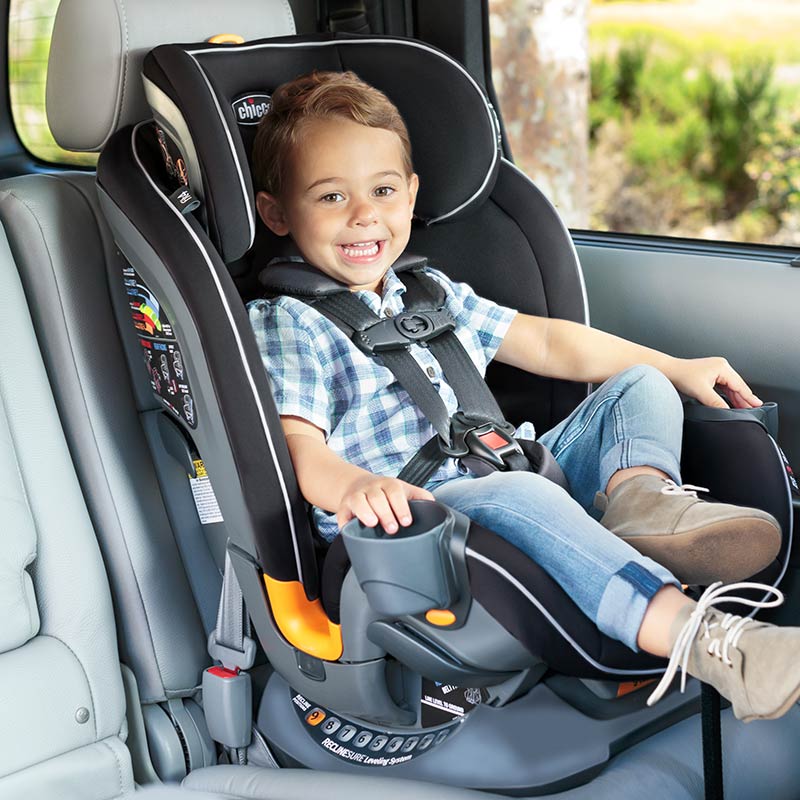
Maintaining Your Car Seat
Ensuring your forward-facing car seat remains in top condition is vital. Regular maintenance not only extends its lifespan but also ensures your child’s safety. By focusing on regular checks and proper cleaning, you keep the car seat functional and safe.
Regular Checks
Inspect the car seat weekly. Check straps for wear and tear. Ensure buckles fasten securely. Examine the seat for any loose parts. Verify that the installation is firm and stable. Look for any cracks or damage on the plastic shell. Regular checks prevent unexpected issues.
Cleaning And Care
Clean the car seat monthly. Use gentle soap and water for washing fabric covers. Avoid harsh chemicals that may damage materials. Wipe down the plastic and metal parts with a damp cloth. Ensure all parts are dry before reassembling. Proper cleaning keeps the seat hygienic and fresh. Follow manufacturer instructions for best results.
Legal And Safety Regulations
Understanding legal and safety regulations is crucial for choosing car seats. Parents want to ensure their child’s safety during car rides. Legal guidelines and safety standards help achieve this goal. Different states have varying laws about car seats. Safety standards set by organizations guarantee the best protection. These regulations ensure children are safe and secure.
State Laws
State laws dictate how car seats should be used. Each state has specific rules for forward-facing car seats. Some states require children to be a certain age before using them. Others focus on weight or height criteria. Parents should know the laws in their state. This knowledge helps avoid fines and ensures safety.
Safety Standards
Safety standards are essential for car seat manufacturers. These standards ensure products are tested for maximum protection. Organizations like the National Highway Traffic Safety Administration set these standards. Car seats must meet crash test criteria to be sold. Parents can check labels for compliance with safety standards. This information is vital for choosing the safest seat.

Frequently Asked Questions
When Can I Put My Baby In A Forward Facing Car Seat?
Switch to a forward-facing car seat when your child is at least 2 years old and meets height and weight limits. Check the car seat’s guidelines for specific requirements. Always ensure the seat is properly installed for maximum safety. Prioritize rear-facing seats for as long as possible for better protection.
When Can A Child Face Forward In A Car Seat?
Children can face forward in a car seat after they outgrow the rear-facing seat. Typically, this is around age 2 or when they reach the seat’s weight and height limits. Always follow the car seat manufacturer’s guidelines for specific requirements.
When Can You Flip Your Baby Forward Facing?
You can flip your baby forward-facing when they are at least 2 years old or meet the car seat’s height and weight limits. Always follow your car seat manufacturer’s guidelines for safety. Rear-facing seats provide better protection for young children in case of an accident.
When Should A Car Seat Be Forward-facing?
A car seat should be forward-facing when your child surpasses the rear-facing weight or height limit. Typically, this is around age two. Always check the manufacturer’s guidelines for specific recommendations to ensure your child’s safety.
Conclusion
Choosing the right time for a forward-facing car seat is crucial. It ensures your child’s safety on the road. Always check your car seat’s guidelines. Different seats have different weight and height limits. Stay informed about safety standards. This protects your little one during travel.
Ask experts if you’re unsure about your choice. Safety experts can provide valuable advice. Remember, your child’s safety comes first. Make the switch only when it’s safe. Your child’s comfort and protection are key. Stay vigilant and make informed decisions.
Safe travels with your precious cargo!

